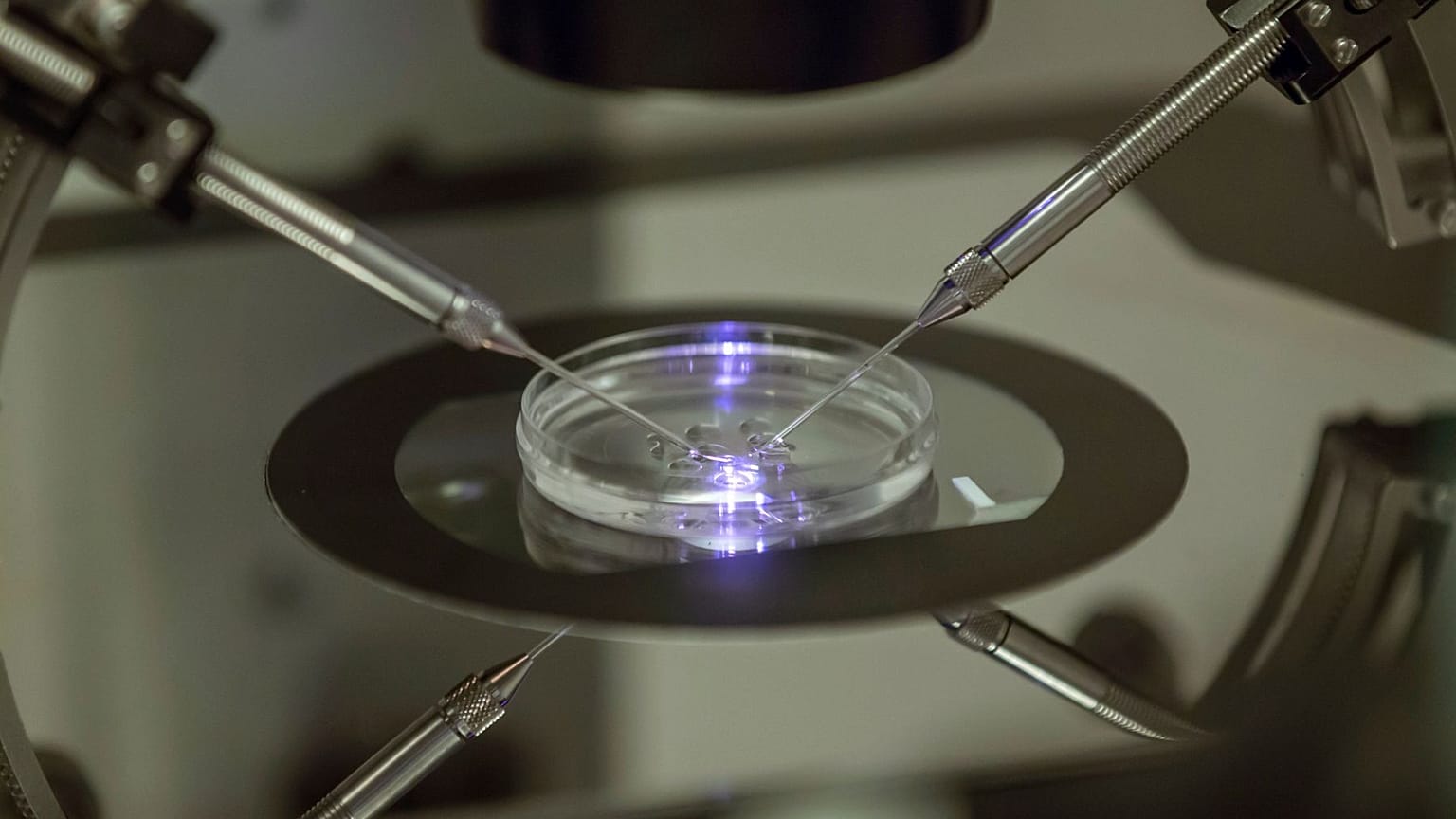A study reported by MIT Technology Review has managed to automate the conception stage of in vitro fertilisation - but is it the future of fertility?
How do you make a baby? According to a new experiment reported in MIT Technology Review, you just need an egg, a sperm cell and a PlayStation 5 controller.
During a trial carried out in spring 2022 by a team of Barcelona-based engineers working for start-up Overture Life, more than a dozen eggs were fertilised using a microscope, a needle, a petri dish and a laptop.
Fast forward a year and two healthy baby girls have been born as a result of the study.
So, what are these sperm-injecting robots and could this really be a quicker, more affordable alternative to in vitro fertilisation (IVF)?
What does the sperm-injecting robot experiment involve?
The concept is pretty straightforward. IVF is currently an expensive process and in high demand. Overture Life is looking to make it easier and more accessible.
"It has to be cheaper. And if any doctor could do it, it would be," Santiago Munné, a geneticist and chief innovation officer at Overture Life, told MIT Technology Review.
This is widely being considered the first successful attempt at "automating" fertility. Dubbed a “desktop fertility machine,” Munné describes the sperm-injecting robots as “a box where sperm and eggs go in, and an embryo comes out five days later”.
The process the team followed is probably about as clinical as baby-making gets: a remote-controlled needle and camera penetrated eggs in a petri dish with a single sperm cell.
Student mechanical engineer Eduard Alba used a Sony PlayStation 5 controller to operate the robot.
"I was calm. In that exact moment, I thought, 'It’s just one more experiment,'" Alba said.
That’s in contrast to the painstakingly skilled practice traditional IVF follows, which involves trained embryologists delicately handling sperm and eggs using ultra-thin needles under a microscope.
While this method has proven to be increasingly successful over the years, the time, labour, and qualifications required to carry out the procedure might help explain why the average cost of IVF treatment in Europe is €2,000 - €5,000 using your own eggs and €4,000 - €7,000 when carried out as part of an egg donor programme, according to Fertility Clinics Abroad’s figures.
Is it likely to become a legitimate alternative to IVF?
Despite the initial success of the trial, the report in MIT Technology Review points out "it won’t be easy to fully automate IVF [...] Test-tube conception involves a dozen procedures, and Overture’s robot so far performs only one of them, and only partially".
While the experiment has been the first of its kind to prove that one part of the process is achievable with minimal human intervention, the test-tube baby journey is a multi-level operation that Overture’s experiment does not yet facilitate at every point.
But this undoubtedly marks a step in the right direction. And by just automating the fertilisation stage alone, it could save future parents money when it comes to IVF.


















